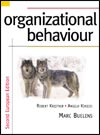 |
1 |  | 
Leadership is a social influence process in which the leader seeks the voluntary participation of subordinates in an effort to reach organizational goals. |
|  | A) | True |
|  | B) | False |
 |
 |
2 |  | 
Leaders administer, maintain, and control; managers innovate, develop, and inspire. |
|  | A) | True |
|  | B) | False |
 |
 |
3 |  | 
Men and women use different leadership styles. |
|  | A) | True |
|  | B) | False |
 |
 |
4 |  | 
According to the Leadership Grid® there is one best leadership style that suites every situation. |
|  | A) | True |
|  | B) | False |
 |
 |
5 |  | 
According to Fiedler's contingency model the three dimensions of situational control are leader-member relations, task structure, and position power. |
|  | A) | True |
|  | B) | False |
 |
 |
6 |  | 
________ is a function of a leader while ________ is a function of a manager. |
|  | A) | Originate; inspire. |
|  | B) | Innovate; control. |
|  | C) | Administer; develop. |
|  | D) | Maintain; administer. |
|  | E) | Maintain; originate. |
 |
 |
7 |  | 
Which of the following is true regarding gender and leadership? |
|  | A) | Women were viewed as more effective leaders when their roles were defined in more masculine terms. |
|  | B) | Men display more social leadership than women. |
|  | C) | Gender differences in leadership effectiveness are associated with the percentage of male leaders and male subordinates. |
|  | D) | Men employ a more participative style than women. |
|  | E) | Women display more task leadership than men. |
 |
 |
8 |  | 
According to ________ the performance of a leader depends on two interrelated factors- the degree to which the situation gives the leader control and whether the leader's self-esteem depends primarily on accomplishing the task or having close supportive relations with others. |
|  | A) | Graen's leader-member exchange model |
|  | B) | Hersey and Blanchard's situational leadership theory |
|  | C) | House's path-goal theory |
|  | D) | Fiedler's contingency model |
|  | E) | Blake and Mouton's Leadership Grid® |
 |
 |
9 |  | 
According to path-theory, when a manager encourages employees to perform at their highest level, he or she exemplifies a ________ leadership style. |
|  | A) | directive |
|  | B) | supportive |
|  | C) | achievement-orientated |
|  | D) | charismatic |
|  | E) | participative |
 |
 |
10 |  | 
Two underlying characteristics of ________ leadership are (1) leaders use contingent rewards to motivate employees and (2) leaders exert corrective action only when subordinates fail to obtain performance goals. |
|  | A) | charismatic |
|  | B) | trait |
|  | C) | in-group |
|  | D) | transactional |
|  | E) | out-group |
 |
 |
11 |  | 
Charismatic leadership is most likely to be effective when |
|  | A) | the situation offers opportunities for moral involvement. |
|  | B) | performance goals are easily measured. |
|  | C) | extrinsic rewards can be linked to individual performance. |
|  | D) | goals can be accomplished with relatively little effort. |
|  | E) | behaviour is heavily constrained by situational factors. |
 |
 |
12 |  | 
According to the ________ model, leaders should focus on increased service to others rather than himself or herself. |
|  | A) | trait |
|  | B) | contingency |
|  | C) | path-goal |
|  | D) | servant-leadership |
|  | E) | charismatic |
 |
 |
13 |  | 
A(n) ________ is someone who leads others to lead themselves. |
|  | A) | superleader |
|  | B) | out-group leader |
|  | C) | in-group leader |
|  | D) | servant leader |
|  | E) | charismatic leader |
 |
 |
14 |  | 
Path-goal theory is based on ________ |
|  | A) | goal-setting theory. |
|  | B) | need theory. |
|  | C) | social learning theory. |
|  | D) | equity theory. |
|  | E) | expectancy theory. |
 |
 |
15 |  | 
Healing, stewardship, and awareness are characteristics of a |
|  | A) | superleader. |
|  | B) | out-group leader. |
|  | C) | in-group leader. |
|  | D) | servant leader. |
|  | E) | charismatic leader. |
 |




 2002 A McGraw-Hill Online Learning Centre
2002 A McGraw-Hill Online Learning Centre